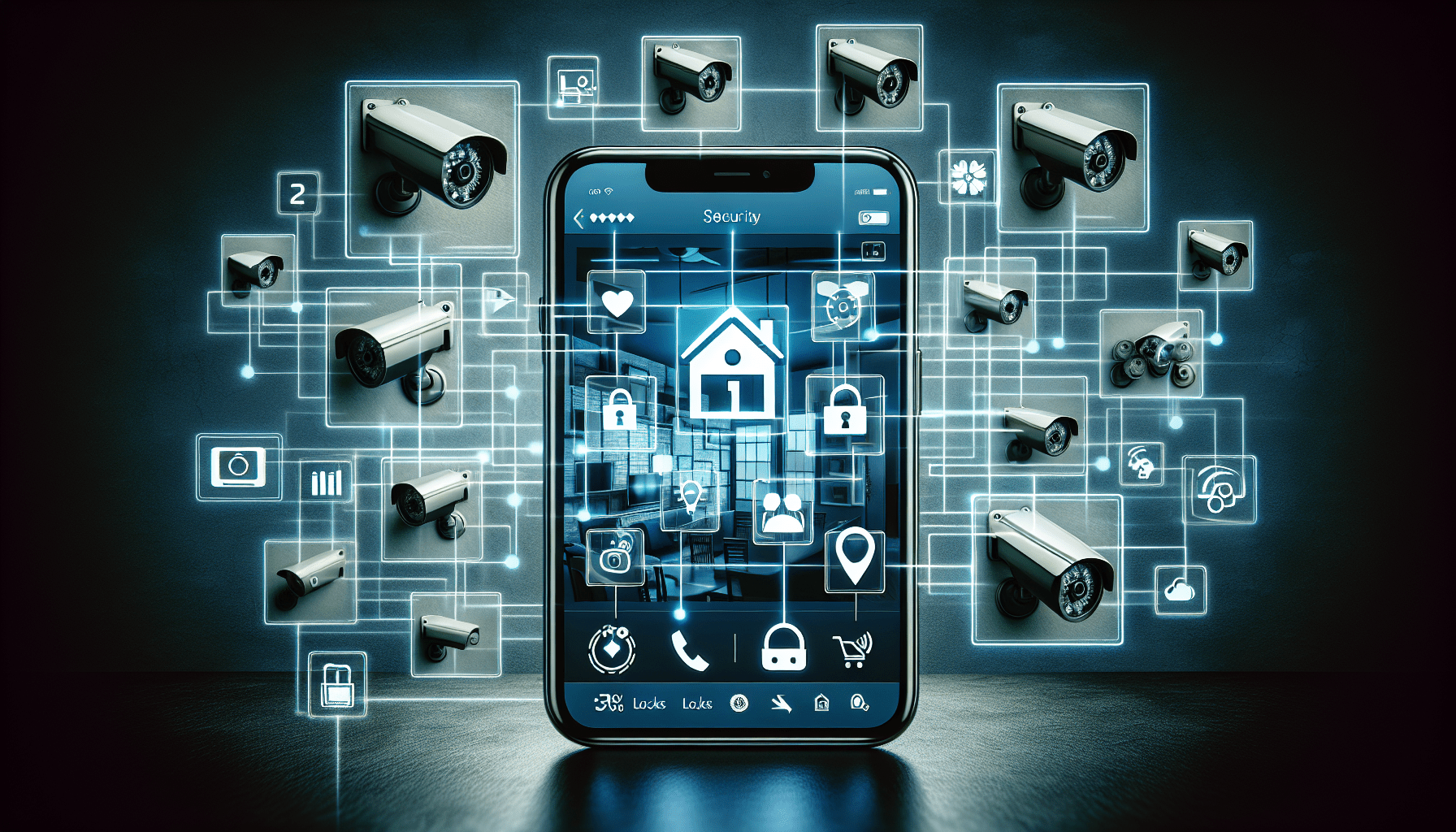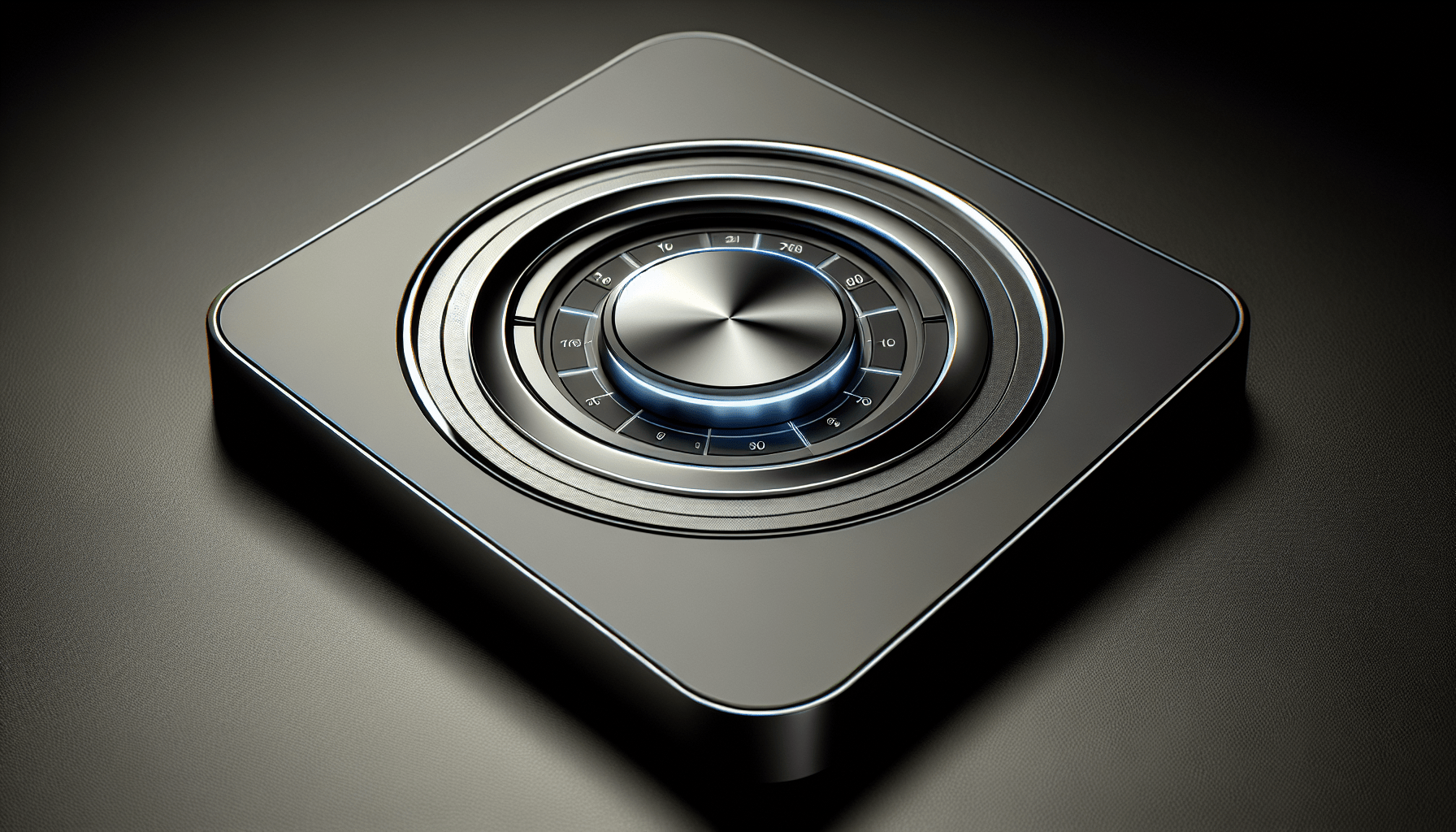If you’re considering upgrading your home to a smart home, you may find yourself wondering whether you need a professional to install your new devices or if you can tackle the task yourself. The good news is, with the advancements in technology and user-friendly interfaces, installing smart home devices has become more accessible and straightforward than ever before. In this article, we will explore the options and help you determine whether you can confidently embark on a DIY installation journey or if it’s best to enlist the assistance of a professional.
Factors to Consider before Installation
Compatibility with Existing Systems
Before installing smart home devices, it is important to consider compatibility with existing systems in your home. Not all devices are compatible with all types of systems, so it is essential to make sure that the devices you choose can be integrated seamlessly with your current setup. This may require some research and consultation with the device manufacturer or a professional installer.
Technical Knowledge and Skills
Another important factor to consider is your own technical knowledge and skills. Installing smart home devices often involves working with complex technology, and if you do not have the necessary expertise, it may be challenging for you to install the devices correctly and set them up properly. It is essential to assess your own abilities and determine whether you have the necessary skills to carry out the installation successfully.
Complexity of Installation
The complexity of installation is another crucial factor to consider. Some smart home devices require a simple plug-and-play installation process, while others may involve more complex wiring or configuration. It is essential to understand the level of complexity involved in the installation process to ensure that you are prepared to tackle it. If the installation seems too complex or overwhelming, it may be best to seek professional assistance.
Electrical Wiring Requirements
When installing smart home devices, it is important to consider the electrical wiring requirements. Some devices may require additional wiring or modifications to your existing electrical system. Before proceeding with the installation, it is crucial to understand the electrical demands of the devices and ensure that your home’s electrical system can accommodate them. Consulting an electrician or a professional installer can help you navigate any electrical challenges.
Benefits of Installing Smart Home Devices
Convenience and Control
One of the primary benefits of installing smart home devices is the convenience and control they provide. With these devices, you can automate various tasks and control them remotely. For example, you can turn off lights, adjust thermostats, and even lock doors from anywhere using a smartphone or voice commands. This level of convenience and control can greatly enhance your daily life and make it easier to manage your home.
Energy Efficiency
Smart home devices are designed to promote energy efficiency. For instance, smart thermostats can learn your temperature preferences and adjust the temperature accordingly, helping to reduce energy waste. Similarly, smart lighting can be programmed to turn on and off based on occupancy or natural light, saving electricity. By installing these devices, you can make your home more energy-efficient and contribute to environmental sustainability.
Enhanced Security
Another significant benefit of smart home devices is enhanced security. With smart security systems, you can monitor your home 24/7 through surveillance cameras, motion sensors, and door/window sensors. These systems can alert you of any suspicious activities and even notify local authorities if necessary. Additionally, smart locks can provide keyless entry and enable you to grant access to your home remotely, giving you peace of mind and ensuring the safety of your property.
Cost Savings
Installing smart home devices can also lead to cost savings in the long run. For example, smart thermostats can optimize energy usage, resulting in reduced utility bills. Smart appliances can also be more energy-efficient, reducing electricity costs. Additionally, some insurance companies offer discounts on homeowners’ insurance for homes equipped with smart security systems. Over time, these cost savings can offset the initial investment in installing smart home devices.
Types of Smart Home Devices
Smart Lighting
Smart lighting refers to lighting fixtures that can be controlled remotely and programmed to turn on and off automatically. These devices offer features such as dimming, color-changing, and scheduling, allowing you to customize your lighting experience to suit your needs and preferences. Some smart lighting systems can even be integrated with voice assistants like Amazon Alexa or Google Assistant for hands-free control.
Smart Thermostats
Smart thermostats are designed to provide better control over your home’s heating and cooling systems. These devices can learn your temperature preferences and adjust the temperature accordingly, ensuring optimal comfort and energy efficiency. Many smart thermostats also offer remote control capabilities, enabling you to change settings from anywhere using a smartphone app.
Smart Security Systems
Smart security systems include a range of devices such as surveillance cameras, motion sensors, door/window sensors, and smart locks. These systems provide enhanced security by allowing you to monitor your home remotely, receive real-time alerts, and even control access to your property. Some smart security systems can be integrated with other devices, such as smart lighting or voice assistants, to create a comprehensive home automation and security solution.
Smart Appliances
Smart appliances are everyday household appliances that can be connected to the internet and controlled remotely. Examples include smart refrigerators, washing machines, ovens, and even coffee makers. These appliances offer features such as remote monitoring, scheduling, and energy optimization, making household chores more convenient and efficient.
Installation Process for Smart Home Devices
Preparation and Planning
Before starting the installation process, it is crucial to prepare and plan accordingly. This involves ensuring that you have all the necessary tools and materials, reading the device’s installation instructions thoroughly, and familiarizing yourself with the steps involved. It is also essential to plan the placement of the devices and consider any wiring or network connection requirements.
Device Setup and Pairing
Once you have prepared and planned, the next step is to set up and pair the smart home devices. This typically involves connecting the devices to a power source, following the manufacturer’s instructions for connecting to your home’s Wi-Fi network, and downloading any necessary apps or software onto your smartphone or tablet. Some devices may also require a pairing process to establish communication with other devices or hubs.
Network Connection and Integration
After setting up and pairing the devices, the next step is to establish a network connection and integrate the devices into your existing smart home ecosystem. This may involve configuring settings in the devices’ companion apps, linking the devices to a central hub or voice assistant, and ensuring that all the devices can communicate with each other seamlessly. Testing the network connection is also important to ensure proper functionality.
Testing and Troubleshooting
Once the installation and network integration are complete, it is essential to thoroughly test all the features and functions of the smart home devices. This includes testing whether remote control, scheduling, and automation features work as intended. It is also important to troubleshoot any issues or errors that may arise during the testing phase, following the troubleshooting steps provided by the device manufacturer or seeking assistance if needed.
DIY (Do-It-Yourself) Installation
Advantages of DIY Installation
DIY installation of smart home devices offers several advantages. Firstly, it can save you money since you won’t have to pay for professional installation services. Secondly, DIY installation gives you the flexibility to install the devices at your convenience without scheduling appointments. Additionally, it allows you to have complete control and knowledge of the installation process, giving you a better understanding of how the devices work and how to troubleshoot any potential issues.
Tools and Materials Required
To successfully install smart home devices on your own, you will need a few tools and materials. Common tools include a screwdriver set, wire stripper, pliers, and a drill. Additionally, you may need materials such as electrical tape, wire connectors, mounting brackets, and cables. It is important to check the installation requirements for each specific device to ensure that you have all the necessary tools and materials beforehand.
Step-by-Step Instructions
Each smart home device may have a slightly different installation process, but here is a general step-by-step guide for DIY installation:
- Start by reading the manufacturer’s installation instructions thoroughly.
- Gather all the necessary tools and materials.
- Turn off the power to the area where you will be working to ensure safety.
- If required, mount the device using the provided brackets and secure it in place.
- Follow the wiring instructions to connect the device to the power source or existing wiring.
- Configure any necessary settings in the device’s companion app or control panel.
- Test the device to ensure proper functionality.
- If installing multiple devices, repeat the process for each device.
- Once all devices are installed, establish network connectivity and integration as mentioned earlier.
- Test all the features and functions of the devices to ensure everything is working correctly.
Precautions and Safety Tips
When undertaking a DIY installation of smart home devices, it is important to prioritize safety. Here are a few precautions and safety tips to keep in mind:
- Always turn off the power to the area where you will be working to avoid electrical accidents.
- Follow the manufacturer’s instructions for installation and adhere to any safety guidelines provided.
- If you are unsure about any aspect of the installation, consult a professional installer or electrician.
- Use the appropriate tools for the job and handle them with care.
- If working at heights or in challenging locations, ensure you have proper safety equipment.
- If you encounter any electrical problems or complications during the installation, seek professional assistance.
Professional Installation
Advantages of Professional Installation
While DIY installation may be suitable for some individuals, there are several advantages to opting for professional installation of smart home devices. Firstly, professionals have the necessary knowledge and expertise to handle complex installations and ensure that everything is set up correctly. They can also provide guidance and recommendations based on your specific needs and preferences. Additionally, professional installers can save you time and effort by taking care of all the installation tasks, allowing you to focus on other priorities.
Choosing a Reliable Installer
When considering professional installation, it is crucial to choose a reliable and reputable installer. Here are a few factors to consider when selecting an installer:
-
Experience and Expertise: Look for installers who have extensive experience in installing smart home devices and a solid understanding of the technology involved.
-
Reviews and Recommendations: Read online reviews and seek recommendations from friends, family, or neighbors who have had smart home devices installed professionally.
-
Certifications and Training: Check if the installer holds relevant certifications or has undergone training from recognized organizations.
-
Warranty and Guarantees: Inquire about any warranties or guarantees offered by the installer to ensure that you are covered in case of any issues or problems after installation.
-
Cost and Pricing: Compare the costs and pricing structures of different installers to ensure that you are getting a fair deal.
Cost Considerations
Professional installation of smart home devices does come at a cost, and it is important to consider this when making your decision. The cost of professional installation can vary depending on factors such as the number of devices, the complexity of the installation, and the region where you live. It is advisable to obtain quotes from multiple installers and compare them to determine the most cost-effective option for your specific needs.
After-sales Support
One additional advantage of professional installation is the availability of after-sales support. Reputable installers often provide ongoing support and assistance, ensuring that any issues or concerns you may have after installation are addressed promptly. This can provide peace of mind and a sense of security knowing that you have professional support available whenever you need it.
Common Challenges and Pitfalls
Compatibility Issues
One common challenge when installing smart home devices is compatibility issues. Not all devices are compatible with each other or with all systems, so it is important to ensure compatibility before making a purchase. This can be done by checking the device’s specifications and consulting with the manufacturer or a professional installer.
Network Connectivity Problems
Another challenge that may arise is network connectivity problems. Smart home devices rely on stable and reliable internet connections to function properly. Issues such as weak Wi-Fi signals or network interference can impact the performance of these devices. To mitigate this challenge, it is essential to have a robust home network and consider investing in a quality router or Wi-Fi extender if needed.
Incorrect Installation
Incorrect installation is a common pitfall when installing smart home devices, especially for those attempting a DIY installation. Incorrect wiring, improper placement, or failure to follow instructions can lead to malfunctioning devices or even damage to your home’s electrical system. To avoid this, it is crucial to thoroughly understand the installation instructions, follow them carefully, and seek professional assistance if needed.
Integration and Automation Challenges
Integrating and automating different smart home devices from various manufacturers can sometimes be challenging. Communication protocols, compatibility issues, and complex setup processes can hinder the smooth integration of devices. It is important to research compatibility and integration capabilities before purchasing and ensure that the devices you choose can work together seamlessly.
Considerations for Specific Devices
Smart Thermostats
When installing smart thermostats, there are a few specific considerations to keep in mind. Firstly, compatibility with your HVAC system is essential. Not all smart thermostats are compatible with every type of heating or cooling system, so it is crucial to check compatibility before purchasing. Secondly, ensure that the thermostat is installed in an optimal location for accurate temperature readings. Finally, take advantage of the features offered by the thermostat, such as learning abilities, scheduling, and energy-saving modes, to maximize its benefits.
Smart Security Systems
Installing smart security systems requires careful planning and consideration. Important factors include determining the coverage area of surveillance cameras and ensuring that all entry points are secured with door/window sensors. It is also important to set up proper user access controls and notifications to ensure that you and your trusted individuals have the necessary access while keeping others out. Additionally, regularly testing and maintaining the security system is crucial to ensure its effectiveness.
Smart Lighting
When installing smart lighting, it is important to plan the placement of the lights strategically. Consider the purpose of each space and choose appropriate lighting fixtures accordingly. Take advantage of features such as dimming, scheduling, and color-changing to create the desired ambiance and maximize energy efficiency. Finally, ensure that the lighting system can be easily integrated with other devices or voice assistants for seamless control.
Smart Appliances
Installing smart appliances involves considering their compatibility with existing electrical systems or infrastructure. Ensure that your home’s electrical setup can accommodate the appliances’ power requirements. Additionally, take advantage of the appliances’ smart features, such as remote monitoring, scheduling, and energy optimization, to simplify your everyday tasks. Regularly update the appliances’ firmware to ensure they have the latest security patches and features.
Factors to Decide between DIY and Professional Installation
Budget
Budget plays a significant role in determining whether to opt for DIY or professional installation. DIY installation can save you money as you won’t have to pay for professional services. However, it is essential to weigh the potential costs of any mistakes or issues that may arise during the installation process. Professional installation, although more expensive upfront, can provide peace of mind and ensure that everything is set up correctly.
Technical Expertise
Your level of technical expertise is an important factor to consider. If you are comfortable working with complex technology, familiar with electrical systems, and confident in your skills, DIY installation may be a suitable option. However, if you lack the necessary knowledge or feel overwhelmed by the technical aspects, it is advisable to seek professional assistance to ensure proper installation and setup.
Time and Availability
The time and availability you have for installing smart home devices should also be taken into account. DIY installation allows flexibility in terms of scheduling since you can work on the installation at your convenience. However, if you have a busy schedule or lack the time to dedicate to the installation process, professional installation can save you time and effort. Professionals can complete the installation efficiently, leaving you free to focus on other tasks.
Complexity of System
The complexity of the smart home system you intend to install is also a crucial factor. If the system involves numerous devices, intricate wiring, or advanced integration, it may be best to opt for professional installation. Professionals have the expertise and experience to handle complex systems, ensuring proper installation and seamless integration. However, for simpler systems with easily installable devices, DIY installation may be a more practical and cost-effective choice.
Conclusion
Installing smart home devices can greatly enhance the functionality, convenience, and energy efficiency of your home. Before embarking on the installation process, it is important to consider factors such as compatibility, technical knowledge, installation complexity, and electrical wiring requirements. Installing smart home devices offers numerous benefits, including convenience, energy efficiency, enhanced security, and cost savings.
There are different types of smart home devices available, including smart lighting, thermostats, security systems, and appliances. Each type has its own installation considerations that should be kept in mind to ensure optimal performance. DIY installation can be a cost-effective option, but it is essential to have the necessary tools, technical expertise, and patience to complete the installation correctly and safely. Professional installation, on the other hand, offers the advantages of expertise, time savings, and after-sales support.
Before deciding between DIY and professional installation, factors such as budget, technical expertise, time availability, and system complexity should be carefully evaluated. Ultimately, the choice depends on your individual circumstances and requirements. Whether you choose to install smart home devices yourself or seek professional assistance, the benefits of a smarter, more efficient home are within reach.






